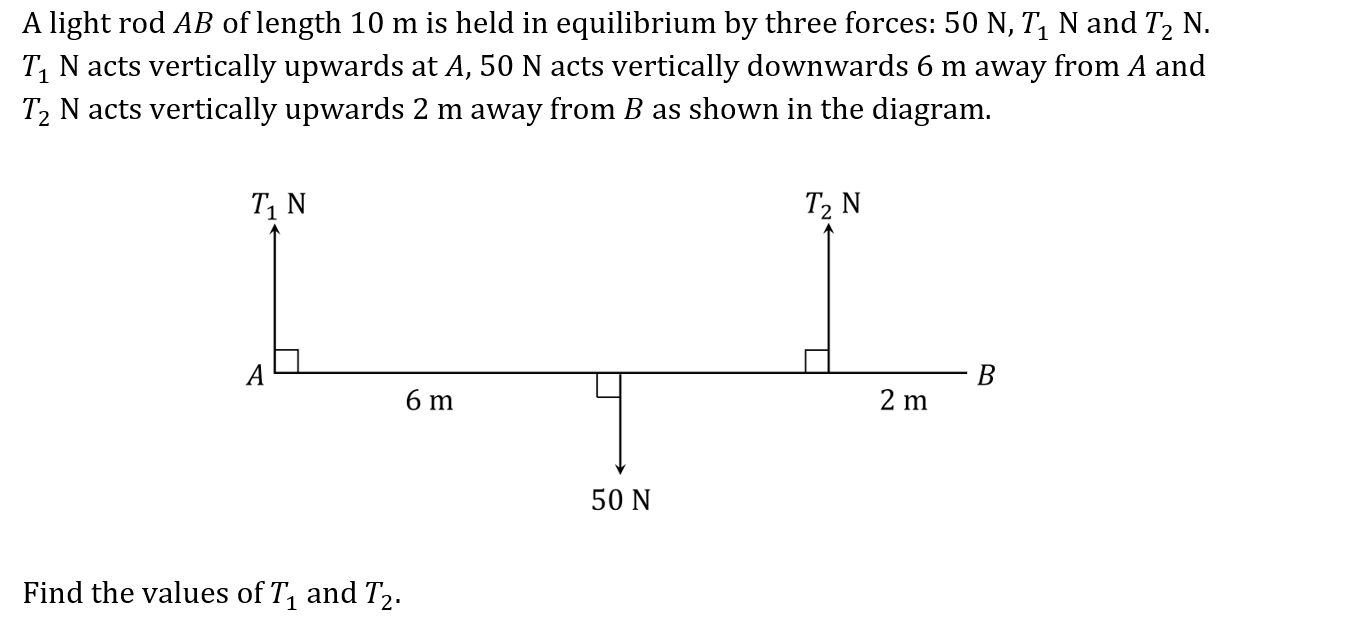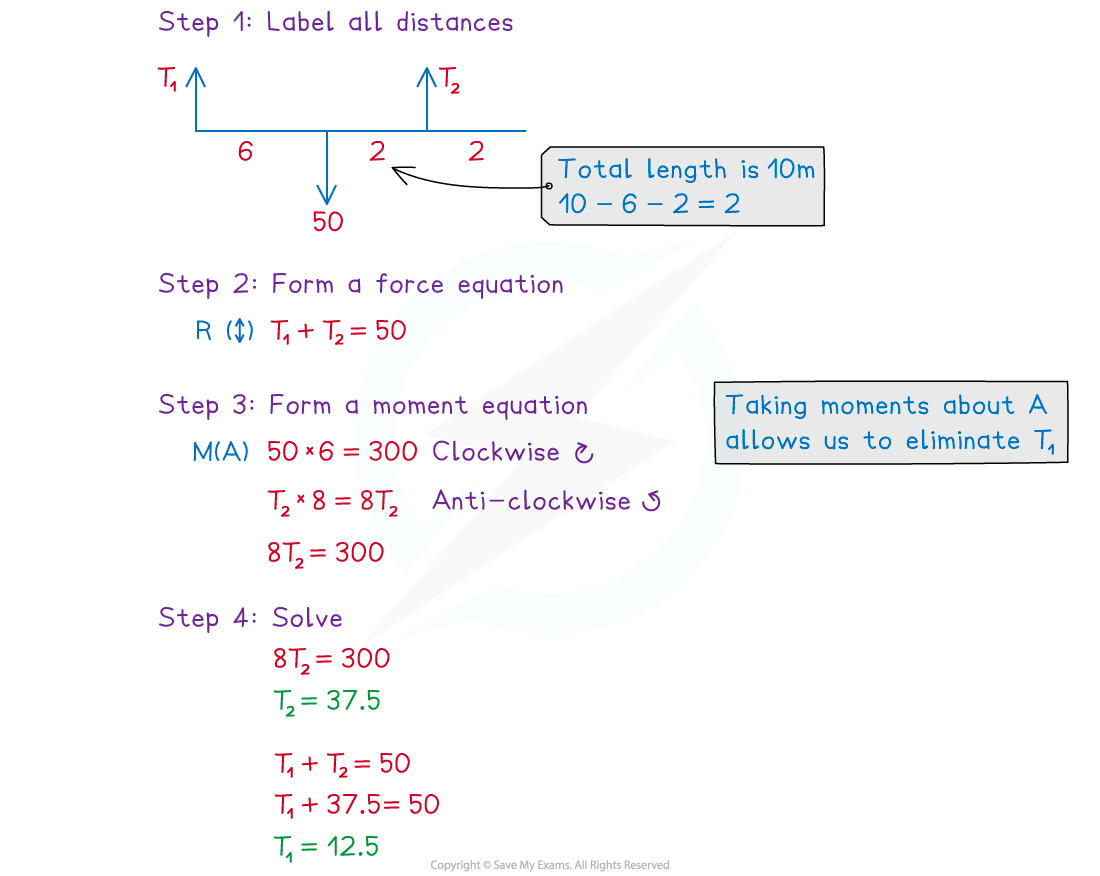- 翰林提供学术活动、国际课程、科研项目一站式留学背景提升服务!
- 400 888 0080
AQA A Level Maths: Mechanics复习笔记4.1.2 Using Moments - Equilibrium
Using Moments - Equilibrium
What happens with moments if a rigid body is in equilibrium?
- If a rigid body is in equilibrium then:
- The resultant force is 0 N
- The resultant moment about any point is 0 N m
- The sum of the magnitudes of the clockwise moments equals the sum of the magnitudes of the anti-clockwise moments
How do I solve problems involving moments and equilibrium?
- Step 1: Identify all forces and perpendicular distances from the pivot
- Step 2: Use the fact that the resultant force is 0 N to form an equation
- Step 3: Use the fact that the resultant moment about any point is 0 N m to form equations
- If there is an unknown force you can choose a pivot that is on the line of action of that force – this will mean that the moment of that force is 0 N m
- Step 4: Solve the equations
Worked Example


Exam Tip
- If you see a force diagram that involves distances then you can be fairly sure that moments will be involved! A clear diagram showing all the distances is key.
- If you pick a pivot and form a moment equation which involves more than one unknown, try choosing another pivot to form simultaneous equations.
- Pick your pivot wisely as unknown and unwanted forces can be eliminated from the equation by choosing the point to be on the line of action of a force.
转载自savemyexams

最新发布
© 2025. All Rights Reserved. 沪ICP备2023009024号-1









